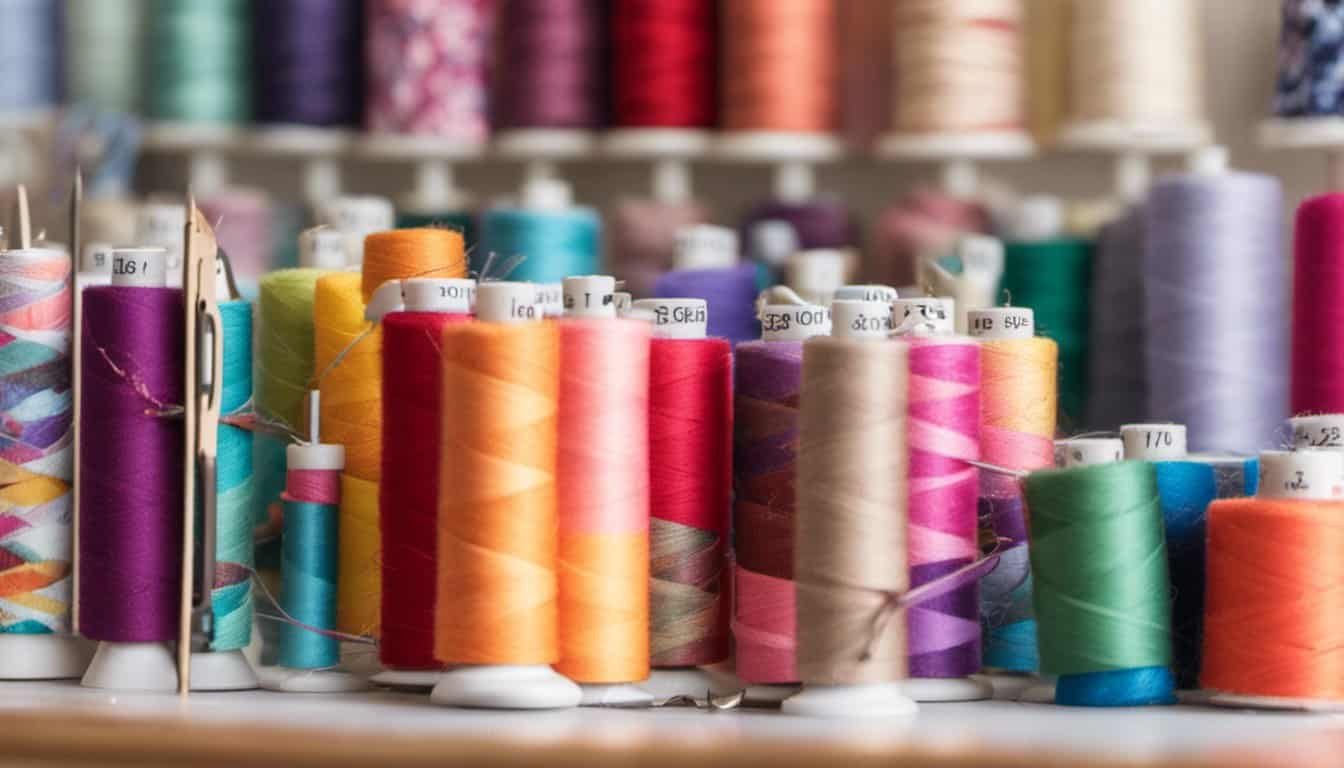If you’ve ever had your sewing machine skip stitches or make weird noises, chances are your bobbin case might be the culprit. I know how frustrating it can be when a simple sewing project turns into a headache because of a broken part. The good news is that fixing a bobbin case isn’t as daunting as it sounds.
Overview of Bobbin Cases
Bobbin cases play a crucial role in the functionality of sewing machines. A properly functioning bobbin case ensures smooth thread feeding and consistent stitch quality.
Importance of a Functional Bobbin Case
A functional bobbin case prevents thread tangling and jamming, which often disrupts the sewing process. It maintains even tension, essential for achieving balanced stitches. A well-maintained bobbin case also increases the lifespan of the sewing machine by reducing unnecessary wear and tear on its components.
Common Issues with Bobbin Cases
Several issues can arise with bobbin cases, impacting sewing performance.
- Thread Jamming: Over time, dust or lint can accumulate, causing the thread to snag.
- Skipping Stitches: Improperly threaded or damaged bobbin cases may lead to skipped stitches, affecting overall garment quality.
- Loose Tension: When the bobbin case isn’t secure, it can create loose tension, resulting in uneven stitches or thread breakage.
- Noise: Unusual sounds during sewing can indicate a problem with the bobbin case, suggesting it may not be seating correctly or has sustained damage.
Identifying these issues early can simplify the repair process and restore the sewing machine’s optimal performance.
Tools Needed for Repair
Repairing a bobbin case requires specific tools to ensure a proper fix. Using the right tools simplifies the process and improves the chances of successfully restoring your sewing machine to optimal functioning.
Essential Tools
- Screwdriver: A small, flat-head screwdriver is necessary for removing screws securing the bobbin case. It’s essential to select one that fits the screws snugly to avoid stripping.
- Tweezers: Use fine-tipped tweezers to handle small parts and retrieve any threads stuck in the bobbin area. Tweezers make it easier to maneuver in tight spaces.
- Cleaning Brush: A small brush helps remove dust and lint buildup inside the bobbin area. Regular cleaning prevents future jamming issues.
- Replacement Bobbin Case: In cases of severe damage, a new bobbin case might be necessary. Ensure you purchase the correct model for your sewing machine.
Optional Tools
- Magnifying Glass: A magnifying glass helps inspect tiny components for damage or wear. This tool is particularly useful for those with strained eyesight.
- Digital Caliper: A caliper measures the dimensions of the bobbin case and thread. Precise measurements assist in finding compatible replacements.
- Lubricant: A sewing machine oil or non-oil lubricant can keep moving parts operating smoothly. Just a drop in the appropriate areas can significantly enhance performance.
- Thread Snips: Quick-cutting thread snips can tidy up loose threads during the repair process. This tool helps maintain a clean workspace.
Having these tools on hand facilitates a smoother bobbin case repair, making the job easier and more efficient.
Step-by-Step Guide to Fixing a Broken Bobbin Case
Repairing a broken bobbin case can restore your sewing machine’s performance and save you time. Follow these straightforward steps for an effective fix.
Diagnosing the Problem
Identifying the exact issue with your bobbin case is crucial. Look for signs like thread jams, skipped stitches, or unusual noises. Observe the threading path to ensure it’s correct and check for any visible damage to the bobbin case itself. If the thread isn’t feeding smoothly, double-check the tension settings, as they can often cause issues. Additionally, cleaning out lint and dust can prevent future problems.
Disassembling the Bobbin Case
Disassemble the bobbin case carefully. Start by removing the needle plate using a small flat-head screwdriver. Gently lift the bobbin case out of the machine. Be cautious to not force any components, as they may be delicate. Use fine-tipped tweezers for any small parts needing attention. Keep track of all the components during disassembly to ensure easy reassembly.
Repairing Specific Issues
Address specific problems based on your diagnosis:
- Thread Jamming: Clean the bobbin case thoroughly. Use a cleaning brush to remove lint and debris that may cause jams.
- Skipped Stitches: Check the bobbin and re-thread the machine according to the manufacturer’s instructions. Ensure that the bobbin is securely seated.
- Loose Tension: Adjust the tension settings on the bobbin case. If necessary, replace the bobbin case with a new one for better performance.
- Unusual Noises: Inspect for damage. If parts appear cracked or worn, replace them as needed. Lubricate the mechanism to reduce friction.
Using these steps, fixing a broken bobbin case becomes a manageable task, leading to more enjoyable sewing experiences.
Tips for Preventing Future Damage
To keep your bobbin case in top condition, regular maintenance and mindful usage are essential. Here are some valuable tips.
Regular Maintenance
- Clean regularly: I clean my bobbin case after every few projects. Dust and lint accumulations can lead to thread jams.
- Oil as needed: I add a drop of sewing machine oil to the moving parts of the bobbin case as specified in my machine’s manual. Oil helps lubricate and prevent wear.
- Check alignment: I ensure the bobbin case sits correctly in its holder after each cleaning. Misalignment can cause issues like skipped stitches.
- Inspect for wear: I look for signs of wear or damage to my bobbin case before starting a new project. Early detection can save time and frustration later.
Usage Best Practices
- Thread correctly: I always thread my machine according to the manual’s instructions. Proper threading reduces the risk of jamming and skipped stitches.
- Use the right bobbins: I only use compatible bobbins for my sewing machine model. Incorrect bobbins can lead to inconsistent tension and bobbin case damage.
- Limit heavy fabrics: I avoid sewing overly thick fabrics without adjusting my tension settings or using a walking foot. This prevents strain on the bobbin mechanism.
- Store safely: I securely store my machine and its components, keeping them away from moisture and dust. A protective cover can extend the life of my sewing machine parts.
When to Seek Professional Help
Sometimes, despite following troubleshooting steps, a bobbin case may require professional attention. Recognizing these moments can save time and prevent further damage.

- Persistent Issues: If problems like thread jams, skipped stitches, or unusual noises continue after multiple attempts at repair, it’s a signal that the issue may be more complex than a simple fix.
- Visible Damage: Cracks or warping in the bobbin case often indicate that it needs replacement rather than repair. Seeking help can prove beneficial to identify the specific component issues.
- Complex Machines: Sewing machines with advanced features or electronic components might need expert assistance. Specialized knowledge often makes a difference.
- Safety Concerns: If a machine emits odd smells, excessive heat, or frayed wires, it’s crucial to consult a professional to prevent accidents or further damage.
- Lack of Time: If a busy schedule makes detailed repairs difficult, engaging a professional can restore functionality while saving personal time.
Each of these factors points to the importance of knowing when to ask for help. Keeping a sewing machine in peak condition often means recognizing one’s limits and valuing craftsmanship through professional assistance.
Conclusion
Repairing a broken bobbin case might seem daunting at first but it’s totally doable with a bit of patience and the right tools. I’ve found that taking the time to understand the common issues and following a step-by-step approach makes all the difference.
Regular maintenance is key to keeping your sewing machine running smoothly and avoiding future headaches. By staying proactive and treating your bobbin case with care, you can enjoy many more successful sewing projects.
And remember, if you ever feel overwhelmed or face persistent issues, reaching out to a professional is always a smart choice. Happy sewing!

















